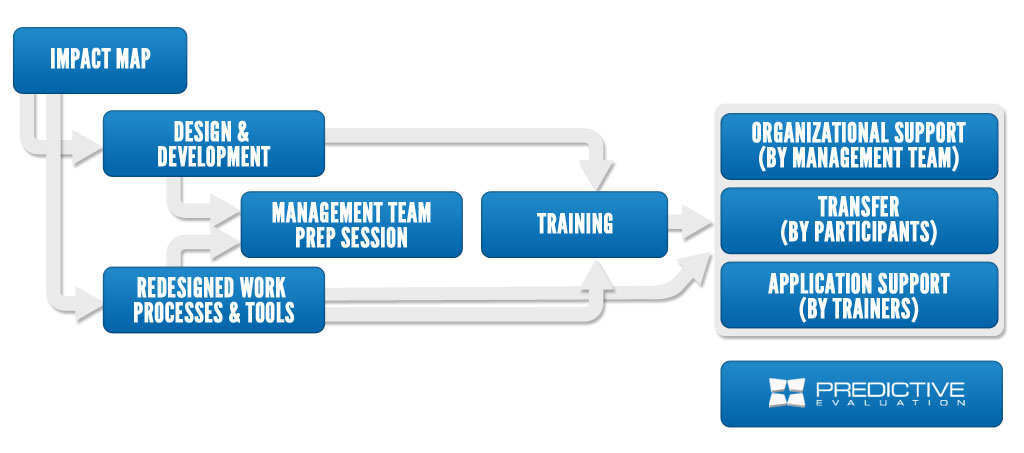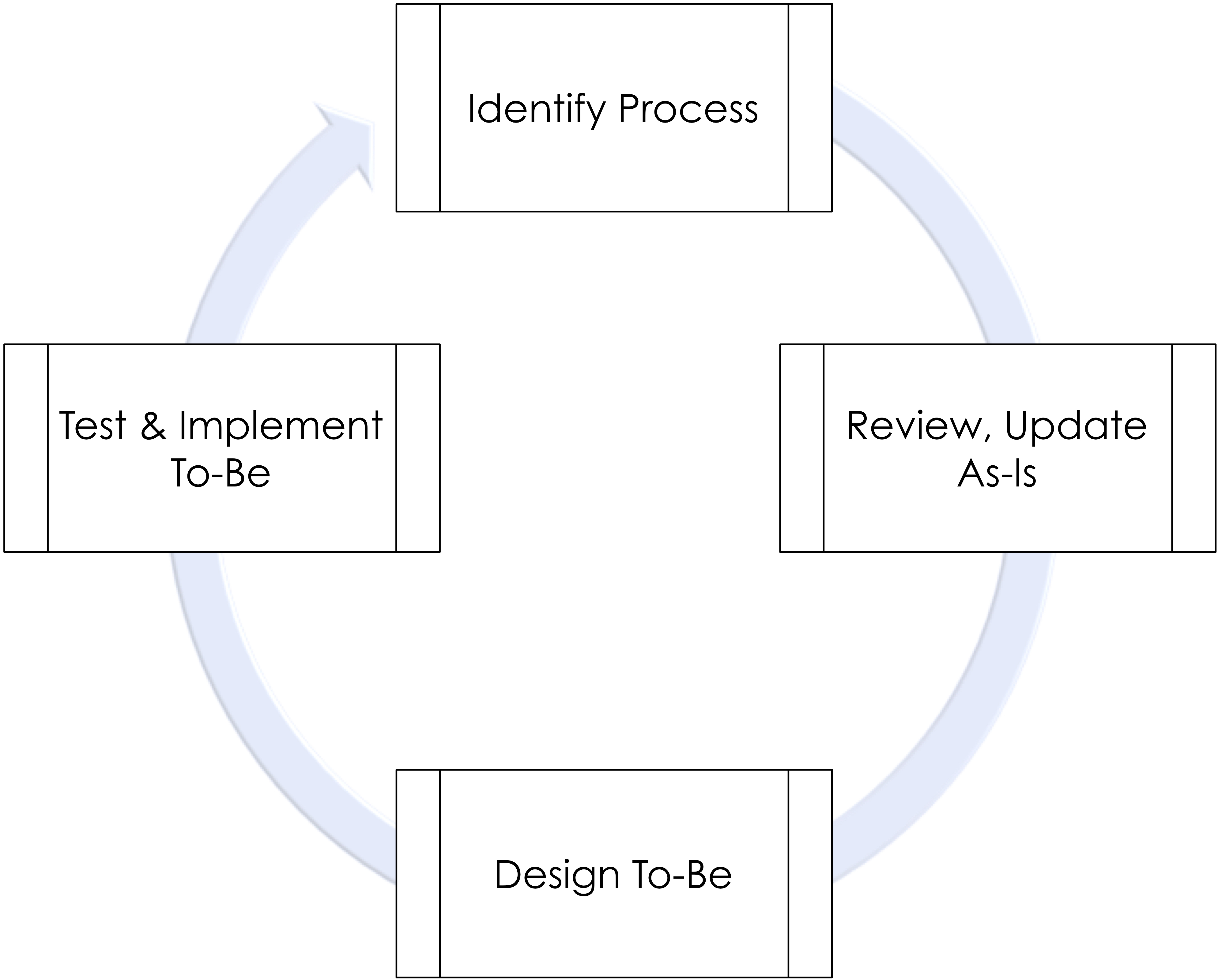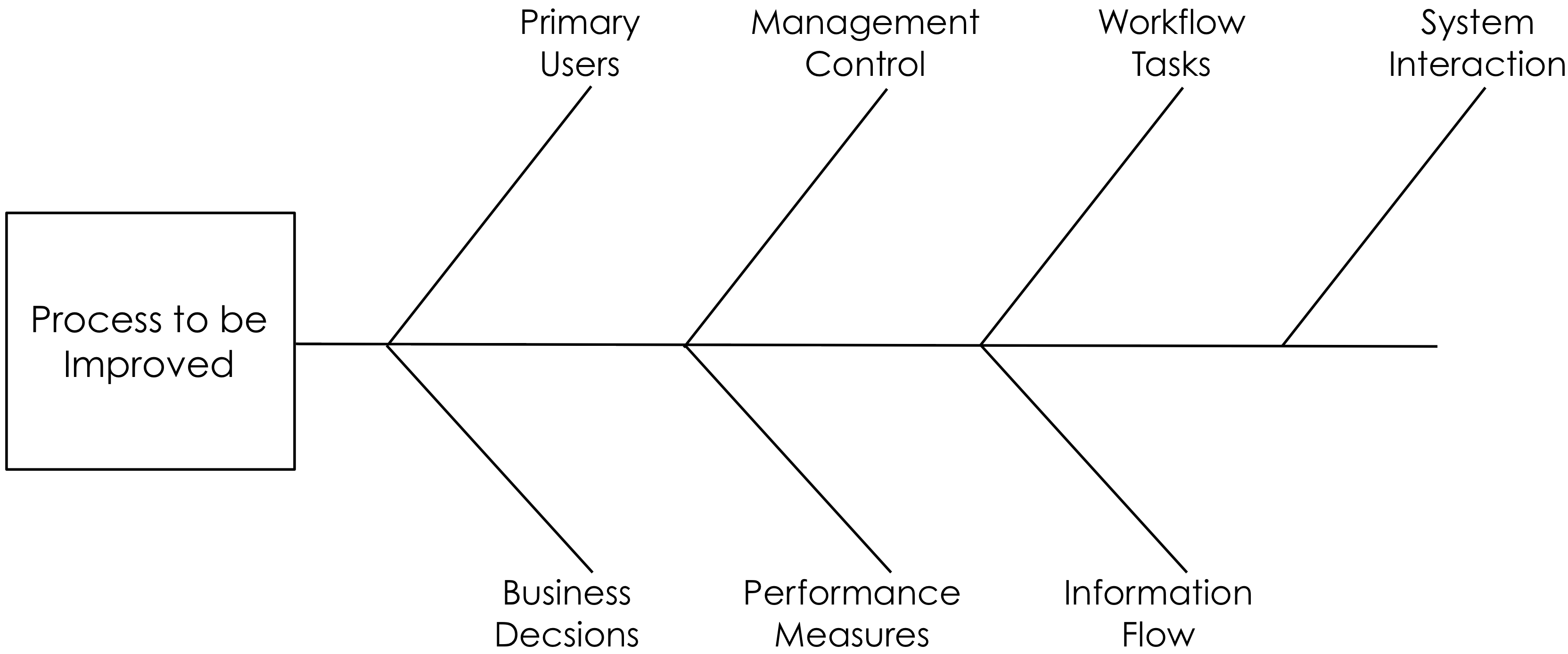Aligning a company’s work processes with skills taught in training is instrumental to maximizing post-training transfer. In the vast majority of cases, training isn’t just a skill issue; it’s also a process issue. Most training functions focus on skill building and don’t align or influence their company’s work processes accordingly; so training efforts aren’t reaching their full potential for success.
The Learning to Performance methodology, a multistep training system, offers a solution to this dilemma. A major differentiator in this approach is the specific step focused on aligning (and possibly redesigning) work processes and tools to match training content. By better aligning internal systems with the new training effort, companies can:
- Significantly improve training transfer.
- Increase employee performance.
- Consider their target audience’s skills, experience and maturity and use this data to determine the alignment between work processes and training.
- Integrate new or existing processes and tools into training efforts, ensuring that employees are properly educated about systems and how to effectively use them.
When creating training programs, carefully consider the redesign of work processes and tools during the instructional design and course development phases.


For example, a global manufacturing company had five task teams operating inconsistently with respect to project management (PM). While each team was tightly aligned to the company’s overall business strategy, each was operating in a vacuum, with no commonality or common work methodologies.
The business needed to implement basic project management companywide to institutionalize common processes, methods and templates. However, if the organization moved forward with project management training and didn’t redesign the PM process, tools and templates, the training would result in little transfer. Therefore, simultaneously with instructional design and development, the organization implemented a new standard project management process. As part of this effort, it developed five standard PM templates and identified one online system the entire company would use.
These tools, templates and processes were approved by the executive team, and training was designed to support the PM initiative. This demonstrates the power of integrating process/tool redesign with instructional design, as shown below:
Redesign Integration Process |
|
While there are many process redesign models, this simple model works especially well. Here are the implementation steps:
Step 1: As part of an instructional needs analysis and environmental scan, identify any process, tools or systems that are redesign candidates and present them to the client or other key decision-makers. They might decline the redesign but should understand the consequences to post-training transfer and performance.
Step 2: If they choose redesign, then the processes are mapped as is. If a company doesn’t have qualified internal resources to handle this effort, it should seek advice from a process-mapping expert on content and exercises that the instructional design should address. During this phase, the team should identify:
- Roles within the process.
- Process steps needed to complete the work.
- Information passed from step to step within the process.
- Decision points within the process that could change direction or require extra steps.
In addition, document the process flow by creating a diagram showing each step, the worker who performs the step and information flowing from step to step.
Step 3: Using the as-is process and the training’s impact map, design the to-be process, noting the content and tasks that training must address. Consider using an iterative adaptation of the fishbone or Ishikawa diagram commonly used for root-cause analysis. Essentially, the fishbone’s use is expanded to determine root cause and identify improvement opportunities.
Process Improvement Root Cause Analysis |
|
At this point, consider key questions about:
Primary Users
- Are job descriptions correct, or do they need updating?
- How are the skills, knowledge and beliefs from the impact map addressed with users? How will training aid in the new process?
- Are the business decisions assigned to users at the appropriate level?
- Are primary users inhibited because of the work environment?
Management Control
- What levels of management control are used within the new process?
Workflow Tasks
- What tasks are needed to perform the process?
- How are they different?
- What is the work process flow?
System Interaction
- What systems will the users employ to do the work?
- Is the current system sufficient?
- What system changes are needed?
Information Flow
- What information is needed to accomplish each task?
- Is information stored appropriately, per company requirements?
- Are there opportunities to gain efficiencies by automating?
- Are there possibilities of implementing new or enhanced tools?
Performance Measurements
- Are adequate leading metrics established within the process, allowing the process owner to investigate task performance to affect final results?
- Are adequate lagging metrics established at the end of the process, allowing for trend analysis of the final result?
Business Decisions
- Are current business decisions based on valid business rules?
- Can business rules be changed to allow opportunities for efficiencies?
Step 4: While the course is being defined the new or enhanced process and/or tools are tested and implemented. These activities greatly enhance the likelihood of successful training transfer.
Overall, this multistep training approach is an effective way to ensure training sticks because it systematically synchronizes work process redesign through pretraining initiatives, training and post-training efforts/evaluation.
Dave J. Basarab is founder of the Atlanta-based training company Dave Basarab Consulting, author of the book Predictive Evaluation (Berrett-Koehler, 2011) and co-author of The Training Evaluation Process (Springer Science Business Media LLC, 1992). Contact him directly at www.davebasarab.com.
Related Articles
- Organizational Assessment: How does a company conduct a training needs analysis? SHRM Online, Templates & Samples, HR Q&As, November 2012
- Training: What are the components of a lesson plan? SHRM Online, Templates & Samples, HR Q&As, November 2012
Advertisement
An organization run by AI is not a futuristic concept. Such technology is already a part of many workplaces and will continue to shape the labor market and HR. Here's how employers and employees can successfully manage generative AI and other AI-powered systems.
Advertisement




